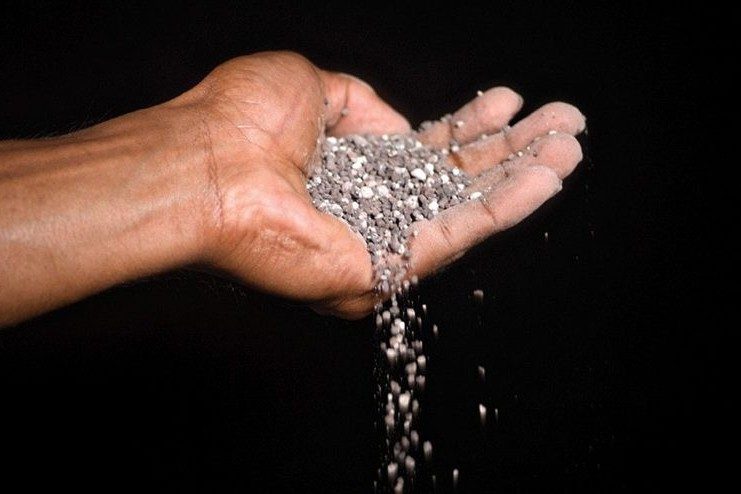Surviving high fertiliser costs
Is the recent spike in fertiliser costs temporary, or will farmers have get used to it, Doug Edmeades writes.

Is the recent spike in fertiliser costs temporary, or will farmers have get used to it, Doug Edmeades writes.
It has come as a shock – the shock is not that fertiliser prices have risen, but the size of the recent increases. Superphosphate is our fertiliser ‘staple’ and for the last decade the cost has ranged between $300-350/tonne ex works (see figure). It broke the $350/ tonne barrier in November 2021, and then suddenly leaped to $499 in June 2020.
An interesting feature of this historical record is that we have been in this place before during the economic meltdown in 2008.
How best should farmers respond?
One approach is to assume this recent spike, like the one in 2008, is only temporary, and that prices will eventually settle again. If this is correct then it is a matter of ‘grin and bear’ in the meantime.
The historical record provides support for this approach. During the mid-1980s all subsidies on fertiliser were removed. It was a tough time, especially for drystock farmers. However, a survey of this sector in 1990 – five years after the subsidies were removed – showed that the profitability of those farms where the fertiliser inputs had been maintained were three times greater than those where fertiliser inputs were withheld.
The rapid increase in fertiliser costs triggered research looking at the effects of withholding fertiliser. The ‘rule of thumb’ which emerged from this science was that production – both pasture and animal – declined at a rate of about 5% a year.
Put differently, if the farm is at optimal soil fertility, then withholding fertiliser for one year will have no lasting detrimental effect. Thus, large spikes in fertiliser prices can be survived in the short-term (12 months).
These high fertiliser prices should nevertheless trigger some rationalisation of the fertiliser policy on both dairy and drystock farms.
A significant number of dairy farms are being operated at Olsen P levels above the economic optimal, typically Olsen P levels in the range 35-40. Withholding fertiliser P (the most expensive nutrient) when the Olsen P levels are above the economic optimal not only is prudent (reduces costs) but is environmentally desirable (reduces P runoff).
Pasture plants need 16 nutrients for optimal growth. Most are already present in the soil, so the ‘big ones’ we worry about in terms of fertiliser inputs are; phosphorus (P), potassium (K), sulphur (S) and molybdenum (Mo). And remember the pasture (in particular the clover) can only grow at the rate of the most limiting nutrient(s).
There is evidence that many farms are not balanced in this regard – while the Olsen P levels are optimal, K, or S or Mo, or perhaps a combination of these nutrients, are suboptimal, limiting clover growth. In these circumstances withholding P inputs and diverting the fertiliser dollar into correcting the soil fertility imbalances can not only reduce fertiliser costs but can, in many cases, result in large increases in pasture (clover) production.
Also note that P largely stays where it is put – the sky will not fall if no fertiliser P is applied, assuming levels are adequate. The same does not apply to mobile nutrients such as K and S. These nutrient tanks drain quickly so withholding K and S inputs can be risky.
The recent development of variable rate technology (VRT) will provide another great opportunity to rationalise the fertiliser spend in hill country. This technology will make it practical to differentially apply fertiliser to blocks on the farm, reflecting their economic potential.
In practice this may mean increasing nutrient inputs on the better classes of land and reducing inputs, or maybe skipping, the ‘bony’ unproductive blocks of the farm. In this manner the long-term profitability of the whole farm is optimised.
The same principles apply to ground-spread fertiliser. Dairy cows move large amounts of nutrients within the farm from the hill slopes to the swales (gully floor) and gateways. In time the soil fertility on the slopes declines and with it the pasture quality. The cost effectiveness of the fertiliser policy can be enhanced by reversing this process and applying the fertiliser to the slopes and not on the nutrient-rich areas of the farm.
Some reminders
Clover N is cheaper than bag N. It costs about five cents to grow a kilogram of clover-based pasture drymatter. It is the cheapest source of feed for ruminants. It follows that the fertiliser programme should be aimed at optimising clover growth – it is a surefire way of reducing fertiliser N inputs, and, at the same time enhancing feed quality.
Stick to the tried-and-true generic fertilisers. They are typically cheaper than branded fertilisers. And be wary of snake-oils – there are many products in the market that are claimed to enhance the efficiency of fertiliser N.
If it sounds too good to be true it probably is.




